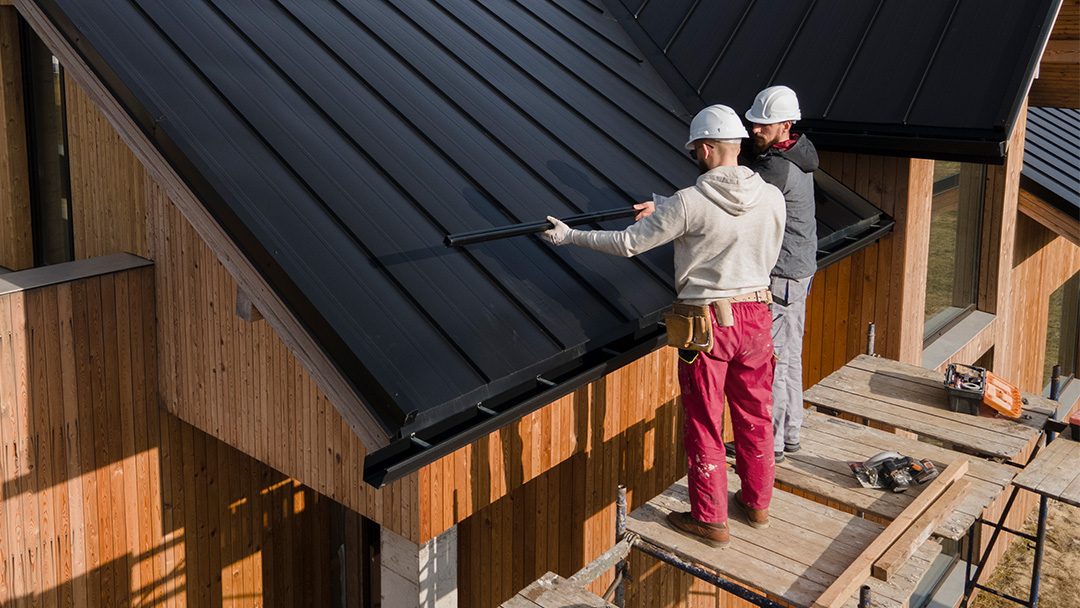
As a homeowner, making informed decisions about home maintenance is vital, and this includes the question of eavestrough installation. The dilemma often boils down to whether it’s a task best handled by the homeowner (DIY) or a professional gutter contractor.
This comprehensive guide will help you better understand eavestroughs, their importance, and the considerations for eavestrough installation.
What Exactly Are Eavestroughs?
First, it’s important to understand what we’re discussing. Eavestroughs, also known as gutters, play an indispensable role in the overall health of your home. They are trough-shaped components affixed to your roof’s edges, designed to collect rainwater and steer it away from the structure of your home.
The process of eavestrough installation, while appearing straightforward, involves certain complexities that warrant serious thought.
Why Are Eavestroughs Necessary?
 When asking, “are eavestroughs necessary?” the answer is a resounding yes. They’re the frontline defense of your home against potential water damage. Eavestroughs protect your property’s structural integrity, prevent soil erosion around your home, guard the basement against flooding, and even help preserve the state of your landscaping. Without a properly installed eavestrough system, your home could suffer significant water damage, leading to hefty repair costs.
When asking, “are eavestroughs necessary?” the answer is a resounding yes. They’re the frontline defense of your home against potential water damage. Eavestroughs protect your property’s structural integrity, prevent soil erosion around your home, guard the basement against flooding, and even help preserve the state of your landscaping. Without a properly installed eavestrough system, your home could suffer significant water damage, leading to hefty repair costs.
The DIY Route to Eavestrough Installation
The appeal of a DIY project lies in its potential cost savings and the sense of satisfaction that comes from hands-on work on your property. If you’re an experienced DIYer with a knack for home improvement tasks, eavestrough installation might seem like a manageable undertaking.
To succeed in a DIY eavestrough installation, you’ll need an assortment of tools and materials. These include:
- A sturdy ladder
- Eavestrough segments
- Connectors
- Downspouts
- Mounting hardware
Accurate measurements and precise leveling are also crucial to the process.
However, the DIY approach comes with its fair share of risks. These include the hazards associated with working at height and the potential damage to your property from improperly installed eavestroughs. An error in installation could lead to more significant problems down the line, negating any initial cost savings.
The Case for Hiring a Gutter Contractor
Conversely, hiring a professional gutter contractor offers significant advantages. A professional brings to the table the requisite skills, tools, and experience needed for effective eavestrough installation. They can ensure your eavestroughs are installed correctly, leveled properly, and securely fastened to your home.
Professional contractors also help with the selection of suitable eavestrough materials, ensuring the aesthetics and functionality of your home are maintained. They’re trained to work safely at height, reducing the risk of accidents, and they’re insured against any mishaps that might occur on the job.
While the cost of hiring a professional may be higher initially, when you factor in the safety risks, time commitment, and potential repair costs associated with a DIY project, the professional route often proves to be more cost-effective in the long run.
Decision Time: DIY or Pro?
 Ultimately, the decision between DIY and hiring a professional for your eavestrough installation will depend on various factors. These include your level of comfort and experience with home improvement tasks, your budget, and how much risk you’re willing to assume.
Ultimately, the decision between DIY and hiring a professional for your eavestrough installation will depend on various factors. These include your level of comfort and experience with home improvement tasks, your budget, and how much risk you’re willing to assume.
The DIY route can indeed be satisfying and cost-effective if you’re handy and understand the project’s nuances. However, it’s important to remember that incorrect eavestrough installation can result in substantial damage to your property, costing far more in the long run.
Alternatively, hiring a professional gutter installer offers the assurance of a job done correctly, safely, and efficiently. Although it may come with a higher initial cost, the peace of mind, potential savings on future repairs, and reduced risk of personal injury often justify the investment.
Remember, maintaining your home is an ongoing task, but with the right approach and informed decisions, it can be a rewarding experience that adds value and longevity to your property.

